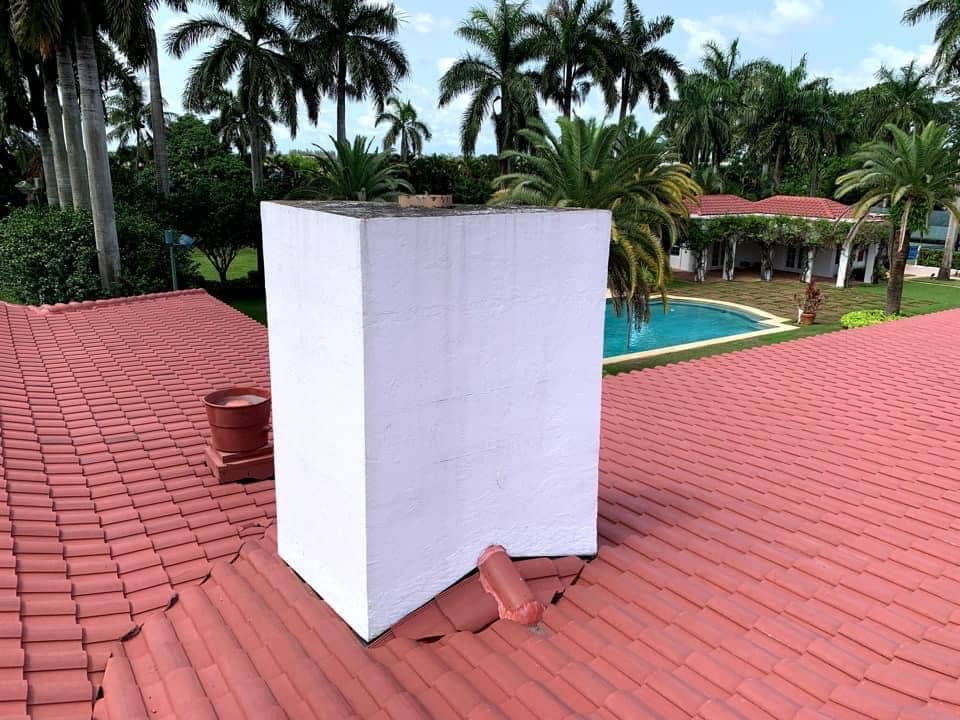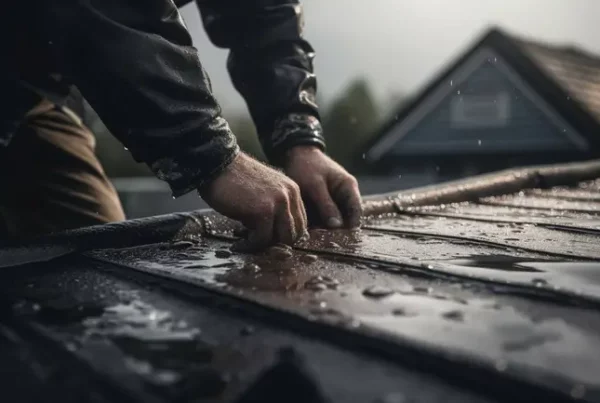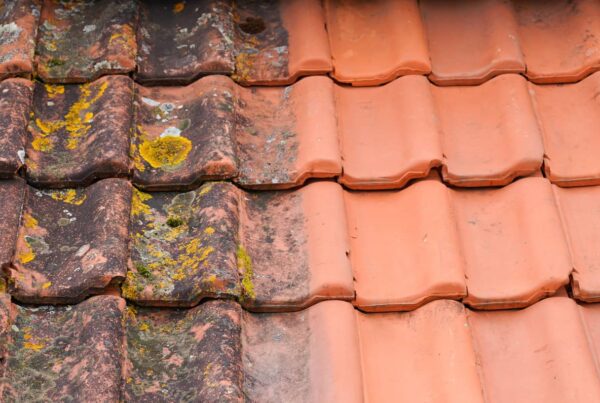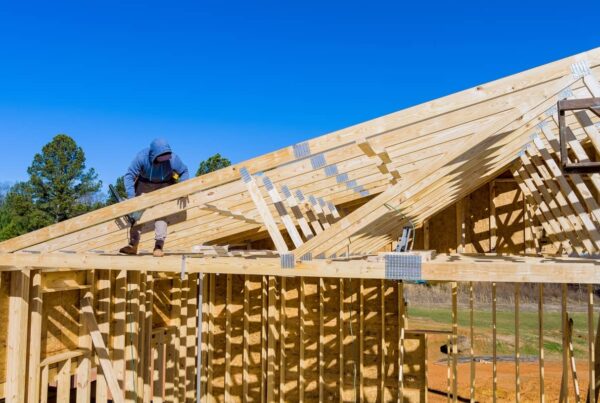
There is a lot that goes into making a roof and protecting the home that is underneath. More than the average homeowner knows about. The chimney is an important part of the home (for those with a fireplace) and it needs protecting. One way to do this is with a roof cricket. What is a roof cricket? It is a sloped backing that is built on to the chimney to allow water to run down the roof. Without it, water would pool on the roof and wear away the shingles and masonry.
Lets take a look at why you need to know about roof crickets, how they work, is it required, the cost, inspecting the chimney and roof, and other maintenance.
Why You Need to Know About Roof Crickets
As mentioned above, chimneys are a very important part of the roof and they need to be protected, along with the roof itself. Roofs are expensive to repair and you want it to last as long as possible. Also, you want the water to be pushed off the roof appropriately so it doesn’t get backed up and cause problems inside the home. Roof crickets also have other names: chimney saddles or chimney diverters.
Here is a picture of a roof cricket at the bottom of the chimney:
Thanks to Arrow Property Inspection for the use of this image
How the Roof Cricket Works
The roofer builds the roof cricket on the back side of the chimney. Then, usually the same materials that are on the roof, for example asphalt shingles is then added to the top. Sometimes metal flashing is added on top or another material, depending on the budget of the homeowner. The roofer makes the roof cricket at an angle and part of the building and installation process for the chimney flashing system. The roof cricket is at a slope and needs to be high enough that the water doesn’t reach the peak of it.
To do this, the roof cricket must be set at a higher plane than the rest of the roof.
Here is an example of a roof cricket on the back of the chimney and made of the shingle. It blends in with the roof.
Thanks to Arrow Property Inspection for the use of this image
Is a Roof Cricket Required
A roof cricket is not required on every roof with a chimney. In fact, it depends on building codes. Up.codes for the state of Florida says,
1503.6 Crickets and Saddles
A cricket or saddle shall be installed on the ridge side of any chimney or penetration greater than 30 inches (762 mm) wide as measured perpendicular to the slope. Cricket or saddle coverings shall be sheet metal or of the same material as the roof covering.
Every state may be different so you will need to look up the requirements.
In case you are interested in the process of building a roof cricket, here is a great video:
Cost of a Roof Cricket
This is a time you want to pay a professional to do this as making sure that the roof cricket is built properly is important. Additionally, you usually can’t find these at a local hardware store as a person who is NOT trained should not be putting it in. Instead, paying a roofer to do this is essential. The roofer will construct the roof cricket and make sure that it fits as each home has one that is custom made to fit the back of the chimney.
So how much should it cost? The price can vary but many roofers charge about $100 or more for the roof cricket and then add labor on top of that for the time it takes for installation. Don’t forget that adding in flashing and shingles will make it cost more as well. Thinking about reflashing the chimney? Sometimes the roof cricket will be part of the price.
In case you want to reflash the chimney, here is some information: Usually you have a choice of aluminum, copper, or steel for the material for the flashing. The most used is aluminum, but the one that lasts the longest is the copper. Check out this blog about the pros and cons for each.
Inspecting the Chimney and Roof
Inspecting the chimney at least once a year is important, as there are often leaks near the chimney unless the materials are all in place and doing their job. Summer is a great time to do maintenance and you can get the chimney ready for the fall and winter months when you will be using it. However, you want to inspect more than the chimney. Not sure where to start? There is a roof inspection checklist you can follow that will help you.
In addition, looking inside the home is important to see if you have any water stained ceilings. If you do, it can be due to water getting into the home from the roof or other issues. It is important to have a professional check it out to determine the cause.
Here is an example of what happens to a chimney that does not have a roof cricket. The water gets in and rots the wood, thus causing structural damage and water damage to the home.

Thanks to Ocoee Home Inspections for sharing their image
Other Maintenance
After bad storms, take a look at the gutters to make sure they are clean. If they are, the water will flow through the downspouts properly and out into the yard. Check in the yard to make sure it drains well. If not, you may need to think about installing a drainage system.
Being in Florida, it is always a good time to check the HVAC. The last thing you want is it to go out during the hottest months. The coastal areas see the HVAC unit lose some years so here are some ideas for what to check.
As summer is upon us, the rains will increase here in Florida and the temperatures will start to soar. Don’t forget there are summer maintenance ideas inside and outside the home .
When to Call a Professional
Call a professional if you want to have a roof cricket added to your chimney, you have leaks on the roof, or you find any issues in your roof inspection checklist. Remember, hiring a professional is worth your time and money to have it done right. Also, it is dangerous for people who are not trained to be on the roof.
Conclusion
As you can see, a roof cricket is important for keeping water out of the chimney, and allowing water to be diverted down the sides of the roof. Without it, there can be leaks. Call Waypoint Property Inspection to inspect your home in Tampa, St. Petersburg, Lakeland, Orlando, Palm Beach, Ft. Lauderdale, and surrounding areas.





